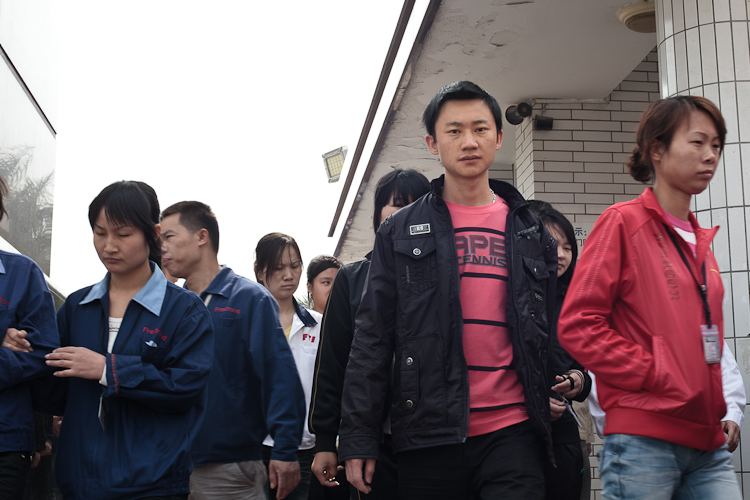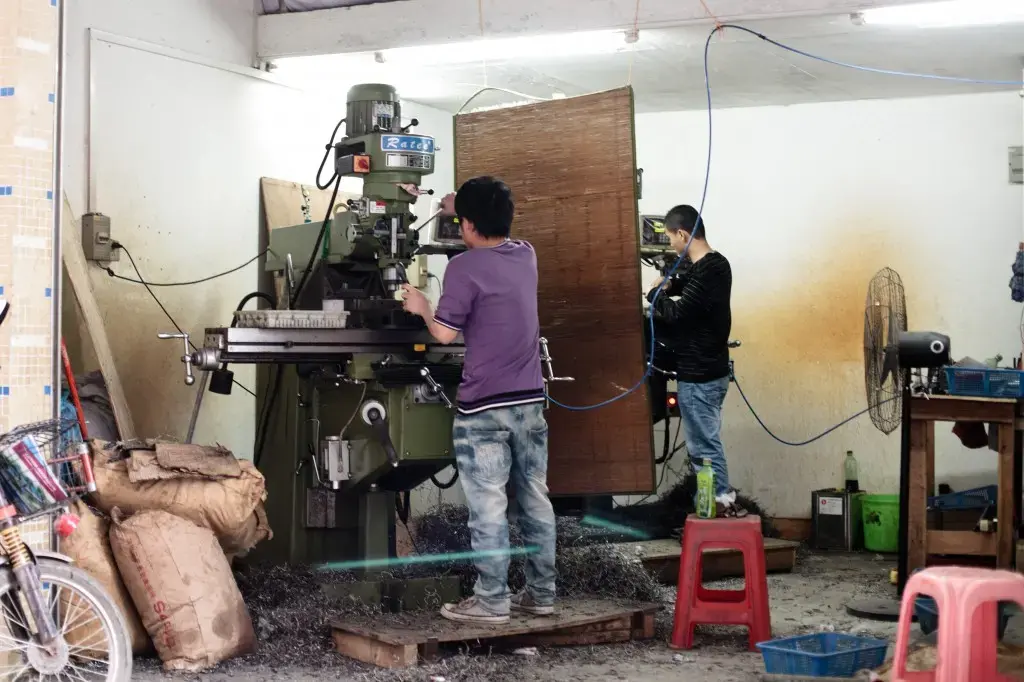China's Pearl River Delta, which includes Hong Kong, Macau, Shenzhen and Dongguan, stands as one of the most important industrial regions in China, and thus the world. Apple contractors produce iPads and iPods here, for instance, and myriad other products take shape in this densely populated region. While most people who visit the region see the gleam and energy of Hong Kong or the casinos of Macau, it's the factories of Shenzhen, Dongguan and dozens of smaller cities that really power the economy here. Everywhere you turn in the region's industrial corridors, things are being made in factories that range in size from illegal workshops in a garage to mega-factories sprawling across as much area as a medium-sized American city.
The Pearl River Delta felt "cinder block grey" compared to Hong Kong. I lived in India at the time and was happy to see factory workers well-clothed and having proper housing (read – simply a real roof over their heads, not a shack). That quickly faded as I noticed compound after compound of factories. It was eerily quiet. I found it weird to think that there are hundreds or even tens of thousands working and living behind the gates. Then there was the smell – the Longgang area of Shenzhen reeked of fumes and outside one factory, there was just trash piled into what was once a stream. In "Foxconn city" I felt so alien – EVERYONE wore Foxconn jackets, the nice ones your company might give as a gift. Men wore black ones and the women pink vests.
With all this industry comes a distinct human cost. I encountered an epidemic of hand injuries. In almost all the cases I documented, workers were maimed because a factory cut corners to increase production. One response to that epidemic is a burgeoning labor movement. While China has a national trade union, the workers feel it represents owners, not laborers. So ex-workers turned self-trained labor lawyers have begun their own advocacy groups, alongside non-governmental organizations like China Labor Watch. I went to China in March 2011 to chronicle the spread of labor advocacy (the same trip provided the basis of the reporting for China's bloody factories: A problem bigger than Foxconn). A year later, looking back on these photos, I am still struck by how widespread serious hand injuries are in the Pearl River Delta. Everytime I use my laptop, iPad, see a Dell computer or drive by a Wal-Mart, I think "who was hurt so I can use or buy this thing?"
























